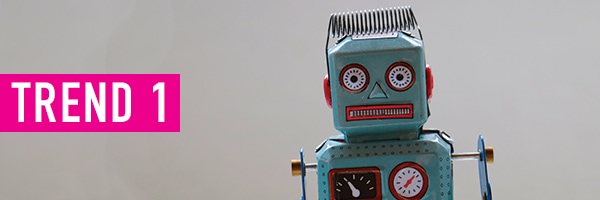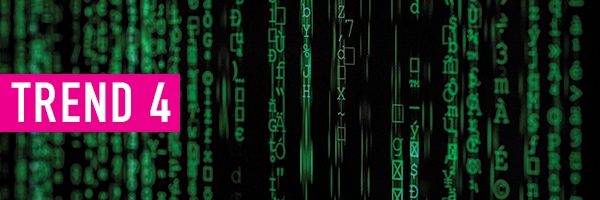Four Trends Shaping Happiness at Work in 2020 and Beyond
 As a workplace happiness speaker, I spend a considerable amount of time describing what employers need to work on today to make our workforce healthier, happier and higher performing tomorrow. As we continue to evolve our curiosity and invest in learning, it’s only a matter of time before we see happiness strategies take root inside our organizations and spill over into our daily lives.
As a workplace happiness speaker, I spend a considerable amount of time describing what employers need to work on today to make our workforce healthier, happier and higher performing tomorrow. As we continue to evolve our curiosity and invest in learning, it’s only a matter of time before we see happiness strategies take root inside our organizations and spill over into our daily lives.
The amount of ground-breaking and truly exciting research may not be widely known yet, but I’ve got insider tips for you. Here are four future-of-work trends to be aware of in the coming years:

Robots Will be Our Co-workers
As robots become more advanced, their moral and ethical decision-making will only become more refined and complex. There is a large group of individuals who are concerned about the integration of robots into the workforce and what that might mean for the future of our happiness. But, researchers and scientists stress that the shift will be gradual, and in the end, good for us. You may be surprised to learn how many robots work alongside us already.
For example, the giant hotel chain Starwood introduced its robotics staff called “Botlrs”, responsible for delivering niceties to guests by navigating around hotels and using elevators without any humans to help them. Hospitals are using robots to deliver trays of food and drugs, clean linens, and take out the trash. Home improvement chain Lowe’s has a robot that shows customers where items are throughout the store. And, we all know about Amazon’s love of robots. They have at least 100,000 Amazon Robotics drive units in use across their 175 fulfillment centers worldwide. They are building their drone run shipping program but, in the meantime, they use 15,000 robots in its warehouses to keep up with customers’ orders. We can’t forget about the race for autonomously driving cars. And, even the U.S. Army is reportedly considering replacing tens of thousands of soldiers with robots.
Interestingly, Jack Ma, co-founder and Executive Chairman of Alibaba shared in an interview at the World Economic Forum that young people today should refocus their studies towards the arts and social sciences to avoid obsolescence. Ma believes that if we continue to build a knowledge-based economy, “machines can never catch up with us.” He is not alone, this is a view shared by other corporate leaders and workplace futurists.

The Future of Aging Happily
As recently as 1950, the average life expectancy worldwide was only 45. Today, however, it’s 65. And by 2050 it’s projected to reach 76. As a result, the number of people who are 60 and older is due to rise from roughly one-in-ten today to about two-in-nine by 2050.
Not only are people living longer, but they’re also enjoying a higher level of self-sufficiency and quality of life. This shift is resulting in the rise of the ‘ageless’ workforce, one that enables ‘returnment’ instead of retirement. Workplace care in 2030 will mean enhancing the longevity of workers, enabling them to embrace lifelong knowledge and skills and ensuring they have the mental and physical energy to work for as long as they want to. This means bringing health, wellness, and fitness into the care package.

The Rise of Mindfulness
Right now across the globe, in just one minute, email users send 204m messages, Apple users download 48,000 apps, Facebook users share 2.46m pieces of content and there are 277,000 tweets. We can imagine that this level of connectivity can place a considerable amount of stress on our overworked brains.
David Cox, Chief Medical Officer of Headspace, believes that by 2030, employers will work towards building a more mindful work environment that promotes technology-free days and redesigned workspaces that allow both open-plan collaborative spaces to secluded workstations that support daydreaming.
Mindfulness is an already massively growing industry. Service providers are part of the $1.1 billion industry of mindfulness and meditation training, which makes up 7.4 percent of the $15.1 billion alternative care market in the U.S.
Fidelity Investments found that 22% of employers offered mindfulness training programs in 2016. Market data forecasts 11.4% average yearly growth for the meditation industry, to $2.08 billion by 2022.
Mindfulness may be an evolving trend, but it doesn’t need to be expensive. This budget-friendly strategy makes it easier for smaller companies to work it into their employee culture strategies. According to research by Dr. David Whiteside, Director of Insights at Plasticity Labs, the simple act of mindfully saying “thank you” to co-workers can significantly improve well-being in the workplace. He provides other simple and cost-effective tactics to improve employee well-being in his research. The ease of which this trend can proliferate will make it more likely for us to see mindfulness take permanent root in the workplace of the future.

Wired Workplaces
By the end of this century, some futurists believe we’ll be wired directly into the cloud, from brain to toe. So, what does that mean for the workplace?
In an effort to combat Post Traumatic Stress Disorder (PTSD), the US Military is always advancing their innovations to find better ways at improving the experience for their employees. Similar to how the US Military invested in emotional intelligence training after learning about the impacts of Shell Shock, here they are again attempting to repair traumatic memories through neural implants.
These innovative measures can become dicey when we start to analyze the other use cases for these inventions. The military has also investigated whether these same implants could enhance the brain. Soldiers could enjoy hyper-normal focus, a perfect memory for maps and no need to sleep for days. The risks may outweigh the benefits as soldiers may now become vulnerable to foreign hackers? But more broadly, an ethicist will have to grapple with the following question; does all or part of our body now belong to our employer?
As we advance into this unknown territory, we’ll need to keep asking ourselves, “Are we making the right decisions?”
From robots that make life a little bit smoother to reinventing ancient practices for the modern world, to transplanting happier thoughts into our brains, these workplace trends we’re discussing will dramatically impact our lives. Whatever happens, we can all agree that the future of work is going to be undeniably complex and thrilling and surprising. Perhaps, exactly as it is today.
Do you want to provide your organization with the tools to increase at-work satisfaction or inspire your audience with science-backed insights to improve workplace culture, employee well-being, and performance? Jennifer is a powerhouse of positivity for any event.


